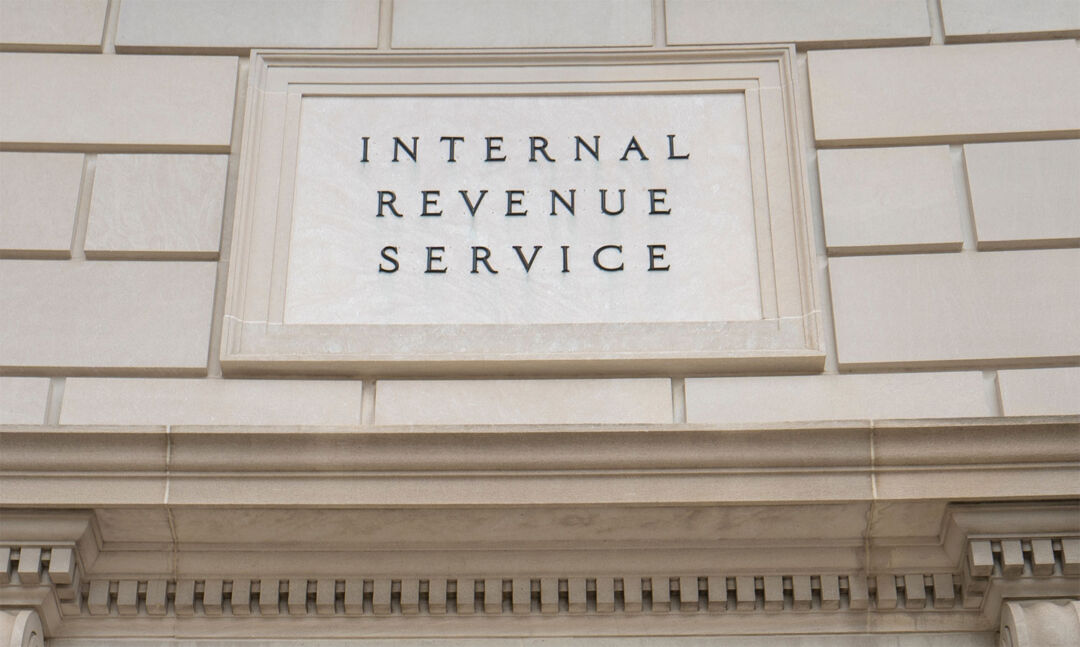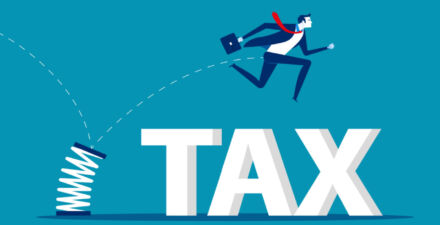New IRS report examines free tax filing option to reduce the cost and complexity for U.S. taxpayers

Filing a tax return with the Internal Revenue Service is one of the most common interactions Americans have with the federal government. Unfortunately, this process is often time-consuming and complex. As a result, many Americans have turned to online software run by tax preparation companies to try and streamline the process. Yet these companies cause their own set of costly headaches.
Tax preparation companies prey upon low-income taxpayers, purposefully obfuscate existing free filing options for people who qualify for them, and consistently register high filing error rates for their customers. These tax filing practices and high fees are regressive, which means low-income individuals and households are disproportionately impacted. Resolving these issues would reduce the cost and complexity faced by U.S. taxpayers filing their taxes, particularly those toward the bottom of the earnings ladder. This in turn would help alleviate income inequality, and enable these individuals and households to spend their earnings on more important things or to save for the future, thus contributing more fruitfully to broader U.S. economic growth and prosperity.
In an attempt to alleviate these problems, the IRS recently released a report investigating the feasibility and cost of filing directly through the IRS via a new proposed service called Direct File. The report finds:
- A majority of taxpayers reported an interest in using an IRS-provided tool to prepare and file their taxes.
- Those who self-prepare their taxes, are younger, or have limited English proficiency are more likely to be interested in directly filing with the IRS.
- The annual cost of the IRS providing this Direct File tool ranges from $64 million to $249 million depending on assumptions around the number of users and scope of covered tax situations.
But before looking closely at these findings and potential next steps for the IRS, it is first worth examining the uptake of current free filing options available to taxpayers, the costly impact of these tax preparation services, and the disproportionate impact these practices have on low-income individuals and households under the current system.
Issues with current Free File partnership between IRS and tax preparation companies
Despite the IRS partnering with online tax preparation companies to provide tax filing services for free—called Free File—there are few taxpayers taking advantage of Free File. Approximately 70 percent of taxpayers are eligible for Free File, but less than 3 percent of taxpayers utilize it. The Volunteer Income Tax Assistance grant program, an initiative designed to support free tax preparation services for the underserved through various partner organizations, faces even lower rates of uptake—only 0.9 percent of all tax returns comes through this program.
These disappointing numbers are due to a variety of reasons. Companies who partner with the IRS on Free File—most notably Intuit Corp. of TurboTax fame, and H&R Block Inc.—deliberately hid their free filing options and redirected eligible taxpayers to their own paid services. The result is at least 14 million Americans were charged by companies for Free File returns that should have cost nothing. It should come as no surprise that these tax prep companies spend millions lobbying Congress every year in order to maintain this status quo.
While this is quite damning, the negative impact of tax preparation services is even more pernicious. Companies including Liberty Tax Inc. and Jackson Hewitt Tax Service Inc., target their services toward low-income communities to take advantage of the complex tax code and taxpayers who are eligible for the Earned Income Tax Credit. (To qualify for the EITC, a taxpayer must have worked and earned income of under $59,187, have investment income below $10,300, and meet other certain qualifying rules.) Zip codes with the highest level of EITC filers have approximately 75 percent more tax preparation storefronts per filer than zip codes with more moderate levels of EITC filers.
Furthermore, government and nonprofit studies consistently show that these tax prep services have high error rates for returns filed on behalf of EITC recipients. Two separate studies by the nonpartisan U.S. Government Accountability Office found that error rates of tax preparers ranged from 60 percent up to 89 percent.
The disproportionate burden of filing taxes on low-income individuals and families
The burdens associated with filing taxes go beyond simply paying the filing fee that tax preparation companies charge. Individual taxpayers often must educate themselves on what credits they qualify for, find an appropriate method for filing their taxes, spend time gathering all the requisite materials, and then spend even more time filling out the necessary forms.
Recent estimates show Americans spend more than 1.7 billion hours and $33 billion preparing individual tax returns, with each individual averaging anywhere from 8 hours to 13 hours to 17 hours filing their personal taxes. These requirements are burdensome enough for the average American, but become even more onerous for those with more complicated tax situations.
These burdens—both in time and money spent—are regressive and disproportionately impact low-income individuals and families. Individuals with low incomes often rely on anti-poverty income support programs that are distributed through the U.S. tax code, most notably the Earned Income Tax Credit. Unfortunately, the stiff filing fees charged by large tax preparation services eat up a significant amount of that earned income, weakening a key income support for the most vulnerable workers.
One recent study conducted among service workers finds that tax refunds total anywhere from 5 to 14 percent of their estimated annual earnings, and that the median service sector worker saw 7 percent of their refund go toward tax-filing costs. For 1 in 4 workers this increased to 15 percent or more of their refund being spent on filing costs. For those who use in-person tax preparation services, filing fees can cost up to an average of 13 percent to 22 percent of a refund.
What’s more, the costs between online and in-person services vary significantly, with in-person services costing nearly 3 times as much as online filing despite it essentially being the same service. As recently as 2011, tax preparers filed approximately 60 percent of returns claiming the Earned Income Tax Credit, demonstrating just how pervasive tax preparation companies are and how much money is being left on the table by EITC recipients using their services.
The high error rates of large tax preparation services also expose EITC filers to more audits. EITC filers are more likely to be audited than non-filers, and audit rates are higher among Black Americans at all levels of income, especially Black Americans who claim the tax credit. A single Black man with dependents who claims the Earned Income Tax Credit, for example, has a 7.73 percent chance of getting audited, in comparison to 0.54 percent of Americans as a whole. This only compounds the problems faced by low-income individuals and leaves them exposed to losing potentially even more income.
IRS report on the feasibility and cost of Direct File
As directed by Congress in § 10301(1)(B) of the Inflation Reduction Act of 2022, the IRS was required to release a report investigating the cost and feasibility of an IRS-run, free e-file tax return system for filing federal taxes. The initial results of its investigation look promising, with a majority of taxpayers (up to 72 percent) saying they were either “very interested” or “somewhat interested” in using an IRS-provided tool to prepare and file their taxes. Among those who file their own taxes with commercial software, 68 percent said they were either very or somewhat likely to switch to a free, IRS-provided online tool.
Taxpayers who are younger, prepare their own taxes, or have limited English proficiency are more likely to be interested in Direct File. Interestingly, the desire for taxpayers not to pay for filing their taxes was so strong that 59 percent of respondents said they would still prefer using an IRS option even if it didn’t support filing state taxes.
There are some qualifying factors around this robust support for Direct File. Many of the preferences collected in this report are based on the assumption that Direct File would be about the same or easier to use than other tax preparation software. Other respondents indicated concerns about the motives of the IRS, potential implications for tax enforcement, and potential for preferential treatment of those who use Direct File. Many respondents also indicated they wouldn’t adopt Direct File because they’re already comfortable with how they currently file their taxes.
Despite some hesitations, many respondents were interested in Direct File specifically because it was run by the IRS. Furthermore, taxpayers who were shown a prototype of Direct File said the software exceeded their expectations when it came to ease of use and simplicity.
Some questions still remain about how Direct File would be implemented. It remains unclear whether this system would only apply to federal taxes or if it would also include an option for filing state taxes. It also remains unclear how user-friendly Direct File would be and whether it would explain the tax code in a straightforward fashion.
Finally, it’s worth highlighting the estimated cost of creating and implementing Direct File. Any cost estimate is subject to uncertainty, which is largely dependent on assumptions around how many taxpayers would use Direct File and the complexity of their tax situations. The lower bound cost estimate is $64 million, which assumes 5 million users and a narrow scope of covered tax situations. The upper bound cost estimate is $249 million, which assumes 25 million users and a broader scope of covered tax situations.
The cost of customer support accounts for more than half of the cost in every scenario, all the way up to 84 percent of the cost in the upper bound estimate. It’s worth noting that none of these estimates take into account any potential cost savings for the IRS that would result from people shifting from paper filings to Direct File. Identifying those savings due to e-filings would be well worth investigating and documenting.
Going forward, the IRS also needs to develop and implement an outreach plan to promote Direct File, as well as work with Congress and other stakeholders to ensure adequate funding is allocated for the program. While the IRS has the authority to launch this program tomorrow if it so chooses, it would require ongoing funding from Congress at adequate levels to ensure that such a program is a success.
IRS funding has been drastically slashed over the past decade, and the recent $80 billion infusion of additional funding included in the Inflation Reduction Act was cut by about $20 billion due to attacks on the agency by conservatives in Congress as part of the recent budget deal to raise the federal debt ceiling. Alongside significant opposition from tax preparation companies, it would be difficult for the agency to ensure the Direct File program is a success without additional funding from Congress.
Indeed, the new report from the IRS understands this reality. It recognizes that the agency’s “ability to deliver [Direct File] would require ongoing funding at adequate levels, and other operational considerations and challenges remain.”
Future options for reforming tax filing
While looking into and eventually developing Direct File is a logical step for the IRS to take, the agency also should investigate the feasibility of other tax filing options. Their recently released report finds that 37 percent of respondents in one survey would prefer a free “return-free” option, defined as when the “IRS prepares and files the tax return for you using W-2 and 1099 information that it receives from your employer.” Indeed, other countries and certain U.S. states have already experimented with similar programs.
The most notable example is the “Simple Return,” where taxpayers are sent a prefilled return along with a letter explaining the program. California implemented a pilot program with a Simple Return system in 2005 and 2006 before authorizing the program for widespread use in 2007. The program focused on residents who previously filed as single taxpayers with no dependents or itemized deductions and only received income from wages. For those who participated in the program and filed electronically, 95 percent said that it saved time.
Furthermore, almost all participants said they would opt to use the service again the following year. While California is the only state currently utilizing a Simple Return system, Michigan, Colorado, and Louisiana have experimented with similar tax filing systems in the past. A similar system has also been implemented in at least 36 other countries, including peer nations such as Germany, Japan, and the United Kingdom.
For most Americans, their income only comes from wages via one employer and interest income from a single bank. Under the current system, the IRS already receives information about these common sources of income and then essentially asks taxpayers to copy that information into a tax return. If the recipients’ tax status is simple enough, then a Simple Return could be sent to them with prefilled information. For these recipients, filing a tax return could be as straightforward as checking the numbers, signing the return, and then sending a check or receiving a refund.
If taxpayers choose not to participate, they can simply ignore the prefilled return entirely or use the data as a starting point for filing their own taxes normally. A 2006 study found that a Simple Return could apply to 42 percent to 48 percent of all taxpayers, saving them up to 225 million hours of time and more than $2 billion per year in tax preparation fees. These savings are likely much higher today considering population and economic growth since the study’s release.
The IRS can benefit as well. A U.S. Government Accountability Office report from 1996 estimated that a plan similar to Simple Return could save the IRS up to $36 million per year through reduced errors in tax filings and subsequent investigations.
Of course, a Simple Return option won’t work for all taxpayers. Some taxpayers face high compliance costs because of their economic situation, for example those who are self-employed and who receive income from a variety of sources, those with multiple investments, or those with large tax-deductions. These taxpayers therefore would likely need to continue filing their own taxes.
People in these situations usually earn higher incomes and don’t fall within the two-thirds of taxpayers who take only the standard deduction and don’t itemize. Finally, it is worth mentioning that because of the U.S. reliance on the tax code to administer social programs such as the EITC and the Child Tax Credit, it may be difficult for complicated eligibility rules and conditions to get translated into a Simple Return system.
Conclusion
The creation of an electronic filing option that would allow taxpayers to submit their taxes directly to the IRS for free has the potential to both ease taxpayers’ burdens and reduce costs for the IRS. In addition to further exploring the feasibility and cost of Direct File, investigating the feasibility of a federal program akin to Simple Return can amplify these benefits even further.
No matter what program the IRS eventually chooses to implement, the recently released report provides a good first step toward exploring the feasibility of a convenient option the IRS can use to reduce the regressive burdens of filing taxes. Continuing to investigate and then implement a feasible free tax-filing service by the IRS can help alleviate income inequality in the United States and put earned income to more beneficial uses by individuals and households to boost more equitable and thus more sustainable U.S. economic growth.



